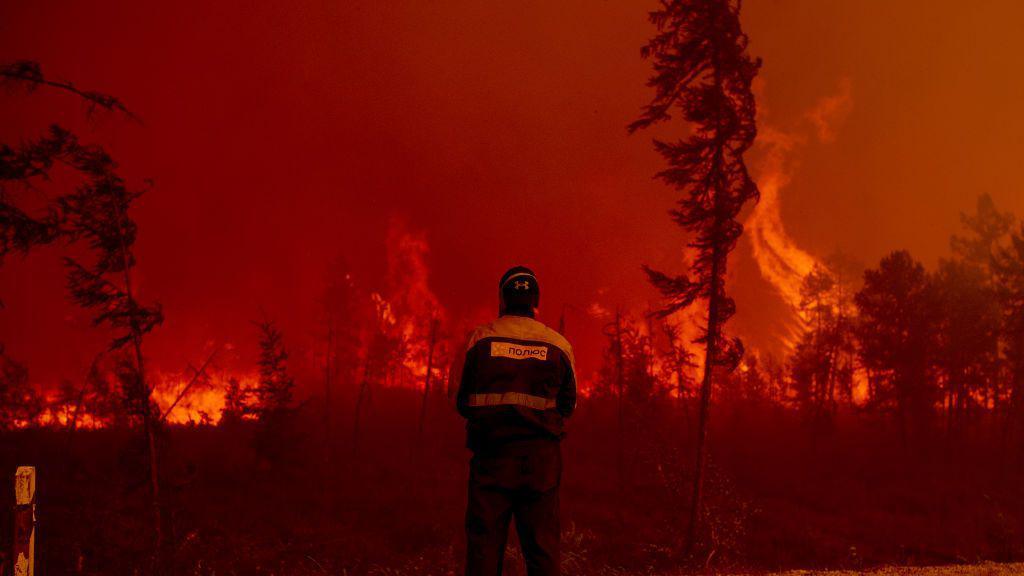Wildfires ravaging Arctic Circle - EU monitor

The last time Sakha, Russia, experienced wildfires was in 2021
- Published
Wildfires are once again ravaging the Arctic Circle, the EU's climate change monitor - Copernicus - has reported.
It is the third time in the past five years that high intensity fires have swept across the region.
In a statement released on Thursday, Copernicus reported higher air temperatures and drier conditions in Sakha, Russia, which are rendering the ideal conditions for wildfires once there is a spark.
Quoted by Russia state news agency Tass, the region's deputy minister of ecology, management and forestry said more than 160 wildfires affected nearly 460,000 hectares of land up until 24 June.
Scientists are concerned that smoke from the flames will hinder the ability of the Arctic ice to reflect solar radiation - which would mean both the land and sea absorb more heat.
Professor Gail Whiteman from the University of Exeter told the 成人快手 that the Arctic region was "ground zero for climate change".
"The increasing Siberian wildfires are a clear warning sign that this essential system is approaching dangerous climate tipping points," she said.
"What happens in the Arctic doesn't stay there," she added, saying that these fires are "a warning cry for urgent action".
Prof Guillermo Rein, Professor of Fire Science, Imperial College London, called the fires a "growing monster of climate change".
鈥淎 decade ago, Arctic wildfires were considered rare events, hardly ever studied. Now they are happening in all summer sessions and at increasing burn scar," he told the 成人快手.
As climate change raises Arctic temperatures, wildfires have shifted north where they burn through boreal forest and tundra, releasing vast amounts of greenhouse gases from carbon-rich organic soils.
- Published2 August 2019
- Published16 March
According to estimates from Copernicus' findings, carbon emissions from the wildfires throughout June were the third highest for the past two decades at 6.8 mega tonnes of carbon - only behind fires in 2020 and 2019.
Carbon emissions in the those years were 16.3 and 13.8 mega tonnes, respectively.
Mark Parrington, senior scientist at CAMS, said conditions leading to the latest bout of fires were similar to those present during the 2019 and 2020 fires.
In 2021, wildfires also swept Sakha but they were less intense than the 2020 and 2019 fires.
Separately, Arctic sea-ice has been declining rapidly since the 1980s.
- Published23 February 2022
- Published18 March 2022